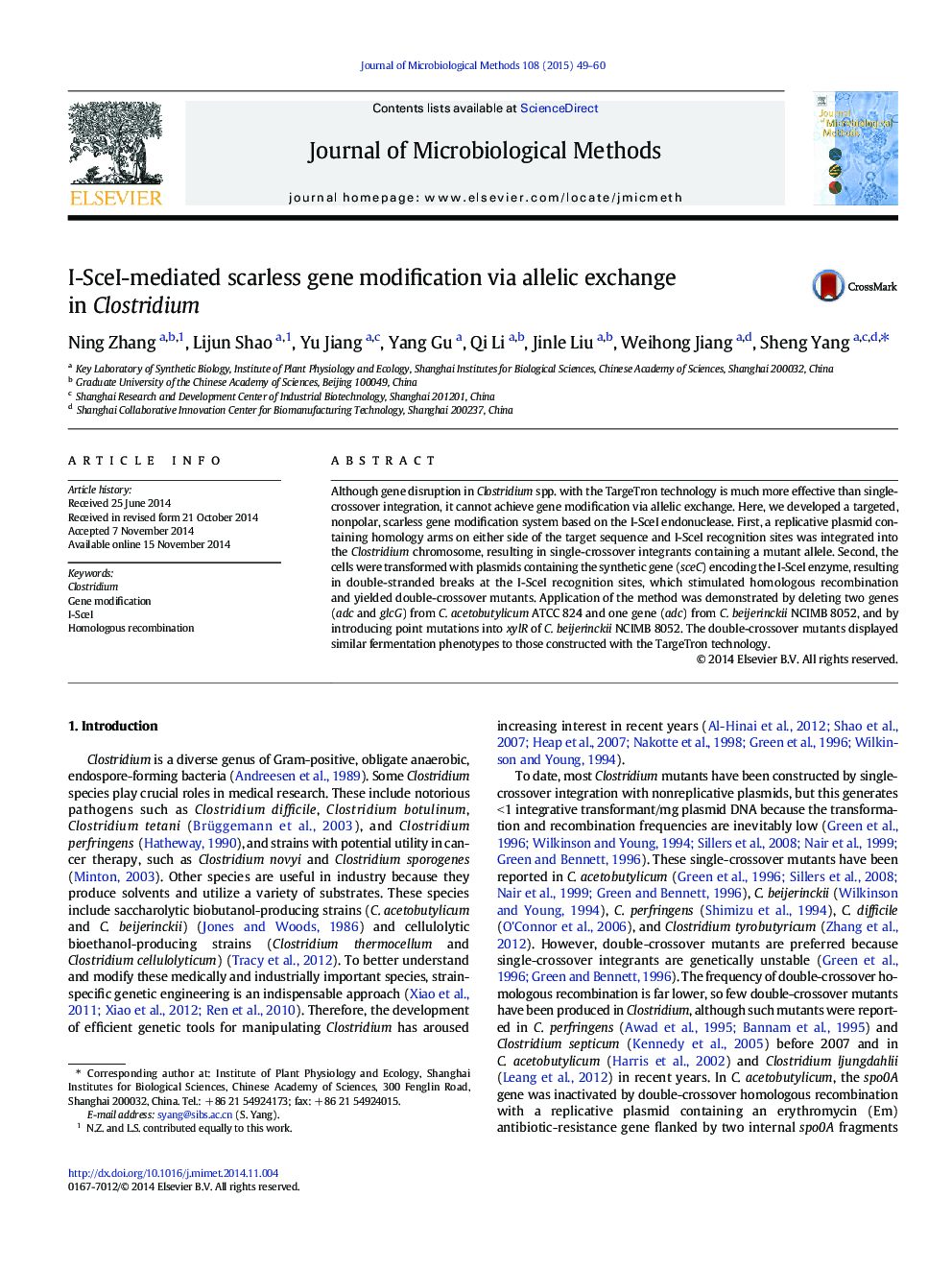| Article ID | Journal | Published Year | Pages | File Type |
|---|---|---|---|---|
| 2089917 | Journal of Microbiological Methods | 2015 | 12 Pages |
•We establish a new scarless gene modification system based on the homing endonuclease I-SceI in Clostridium.•We produce the in-frame deletions of two genes (adc and glcG) in C. acetobutylicum and one gene (adc) in C. beijerinckii.•We generate targeted point mutations of the xylR gene in C. beijerinckii.
Although gene disruption in Clostridium spp. with the TargeTron technology is much more effective than single-crossover integration, it cannot achieve gene modification via allelic exchange. Here, we developed a targeted, nonpolar, scarless gene modification system based on the I-SceI endonuclease. First, a replicative plasmid containing homology arms on either side of the target sequence and I-SceI recognition sites was integrated into the Clostridium chromosome, resulting in single-crossover integrants containing a mutant allele. Second, the cells were transformed with plasmids containing the synthetic gene (sceC) encoding the I-SceI enzyme, resulting in double-stranded breaks at the I-SceI recognition sites, which stimulated homologous recombination and yielded double-crossover mutants. Application of the method was demonstrated by deleting two genes (adc and glcG) from C. acetobutylicum ATCC 824 and one gene (adc) from C. beijerinckii NCIMB 8052, and by introducing point mutations into xylR of C. beijerinckii NCIMB 8052. The double-crossover mutants displayed similar fermentation phenotypes to those constructed with the TargeTron technology.
